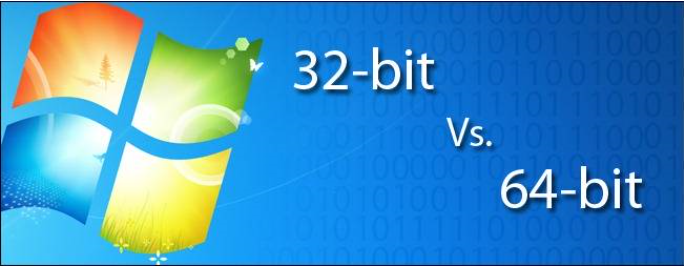Less experienced computer users might be confused when they have to choose between two versions of Windows operating systems, the 32-bit and the 64-bit. These numbers and letters might not mean much to most but it is something every user should be aware of as you might not be using your computer to its full capabilities if you choose the wrong one. The more widely used operating system is the 32-bit and it is more suitable for everyday home use. It is meant for those users who use their computers for simple tasks, although it can perform most operations. In comparison, 64-bit is meant for more difficult operations. This version of Windows is used more by professionals and businesses as they use more complex software and require higher computer performance.

How to determine which version to choose?
Which version of Windows you should obtain depends on what kind of processor you have. The 32-bit processor is much less advanced and cannot process as much information as the 64-bit one, therefore is more suitable for simple, everyday home use. 64-bit performs much better as it is capable of processing much higher amount of data and that is why businesses need the more advanced processor. The 64-bit version of Windows requires you to use to a 64-bit processor. This processor can also run the 32-bit Windows but not the other way around. The 64-bit version of Windows will not work on a 32-bit processor. Therefore, you need to look into what kind of processor you have in order to match the correct version of Windows. You can check whether your operating system and processor match in Control Panel, under System type. If you notice that you are using the 32-bit operating system with a 64-bit processor, you might not be utilizing your computer to its fullest and therefore, should update your Windows.
The major difference between the two Windows versions
You might be wondering how these two versions differ and the biggest difference between the 32-bit and the 64-bit Windows is RAM. The 32-bit operating system will only allow you to use up to 4GB of RAM. Even if you have 8GB RAM installed, you will only be able to use 4GB of them. Therefore, there is no use in installing that much if you will not be able to use them. The 64-bit, on the other hand, can use up to 18 million GB of RAM, so you can have as much RAM installed as you want and they will be used to the fullest.
How do I tell if my computer can run a 64-bit version of Windows?
- Open Performance Information and Tools by clicking the Start button
The Start button, and then clicking Control Panel. In the search box, type Performance Information and Tools, and then, in the list of results, click Performance Information and Tools. - Click View and print detailed performance and system information.
- In the System section, you can see what type of operating system you’re currently running under System type, and whether or not you can run a 64-bit version of Windows under 64-bit capable. (If your computer is already running a 64-bit version of Windows, you won’t see the 64-bit capable listing.)
When installing software, you also need to pay attention the which version of Windows it supports. Usually, most software automatically determines which version is compatible with your operating system. However, some might allow you to choose. Which is why it is important that you know which version you need. If you have the 64-bit operating system, you should choose the same for the software. 32-bit software will also be compatible with the more advanced operating system but you might be missing out. It should also be noted that 64-bit software will not be compatible with a 32-bit operating system so there is no use in trying to obtain it.
To find out if your computer is running a 32-bit or 64-bit version of Windows in Windows 7 or Windows Vista, do the following:
- Open System by clicking the Start button.
- The Start button, right-clicking Computer, and then clicking Properties.
- Under System, you can view the system type.
The 32-bit operating system will become much less common than it used to be as most new computers come with the 64-bit Windows. The latter version is a much more advanced system and the only reason you should stick to the 32-bit one is if your processor is 32-bit or if your other software is not compatible with the 64-bit version.